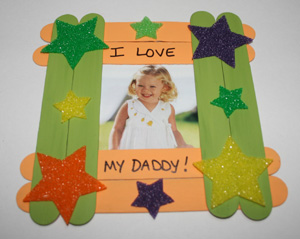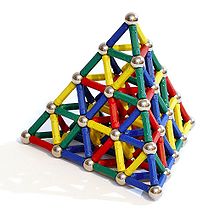Young children begin to learn the names of colors as early as two, and should know their basic colors by preschool age. Sometimes, without the repetition of labeling colors, the learning process will take a little longer. Music is a great way to incorporate repetition and teaching with young children.
Young kids are not only drawn to music naturally, but when combined with visual presentation and actions, the songs can be an effective teaching tool. The following article provides a variety of songs to sing, and listen to, with young children to guide them with color recognition.
Rainbow Songs for Young Children
The rainbow is a wonderful way to teach colors to young children, and in addition, introduce some lessons about weather and science concepts. Song lyrics can teach children that rainbows come out with the combination of sun rays and rain. In addition, try finding some color scarves at second hand stores and dancing with them to the lyrics. If you can find enough to make a rainbow, then have the child or children find the color scarf that matches the lyrics to the song.
Moreover, there are great you tube videos with rainbow graphics providing more visual aides.
The following song was written by Arthur Hamilton and was sung by Peggy Lee in a 1955 movie, titled Pete Kelly's Blues. Recently, the song was recorded for Tourism Australia in 2004 by Delta Goodrem. There is critique of this song because it does not provide all the right colors of the rainbow, but the song still provides teachable moments for color labeling.
I Can Sing a Rainbow
(Chorus)
Red and yellow and pink and green
Purple and orange and blue
I can sing a rainbow, sing a rainbow
Sing a rainbow too
Listen with your eyes, listen with your ears
And sing everything you see
You can sing a rainbow, sing a rainbow
Sing along with me.
Found on KidsTV123 and you tube, The Rainbow Colors Song by AJ Jenkins has vibrant graphics for viewing and the easy listening lyrics correlate more effectively to the actual colors of the rainbow.
This song about rainbows can be sung to the tune of Twinkle Twinkle Little Star:
I see a rainbow in the sky
All the colors streaming by
When there's sunshine and rain too
A rainbow forms for me and you
I see a rainbow in the sky
All the colors streaming by.
Children's Action Songs about Colors
This song is a song that works well for a group circle in an early childhood setting, but can also be sung for a small group of children or just one. If only one child is doing the actions to the song, he/she should wear clothes with a lot of different colors. The lyrics explain the actions in this song:
Red, red is the color I see
If you're wearing red, then show it to me.
Stand up, turn around
Show me your red, then sit back down.
Blue, blue is the color I see....
Try singing the classic song, the Hokey Pokey but call it the Color Pokey. A child will put different color stickers on his/her shoe, hand, elbow, knee and so on. Then the song will be sung with the following lyrics and actions:
The Color Pokey
You put your red shoe in, you put your red shoe out,
You put your red shoe in, and you shake it all about.
You do the color pokey and you turn yourself around
And that's what it's all about.
The song will continue with the color which is sticking to whatever body part that was chosen.
Children's Game with Music
A fun color game that goes along with music is called Do You See?
(To the Tune of Do You Know the Muffin Man?)
Do you see a red color, a red color, a red color
Do you see a red color, sitting in this room?
The child or children can go and find something red by bringing it to you or simply pointing to something red. The song can continue with many different colors and in various scenarios and locations, such as replacing room with car or playground, and so on.
FURTHER SUGGESTIONS
Visit Felt Board Ideas for felt stories and activities to correlate with learning colors!






.JPG)



























